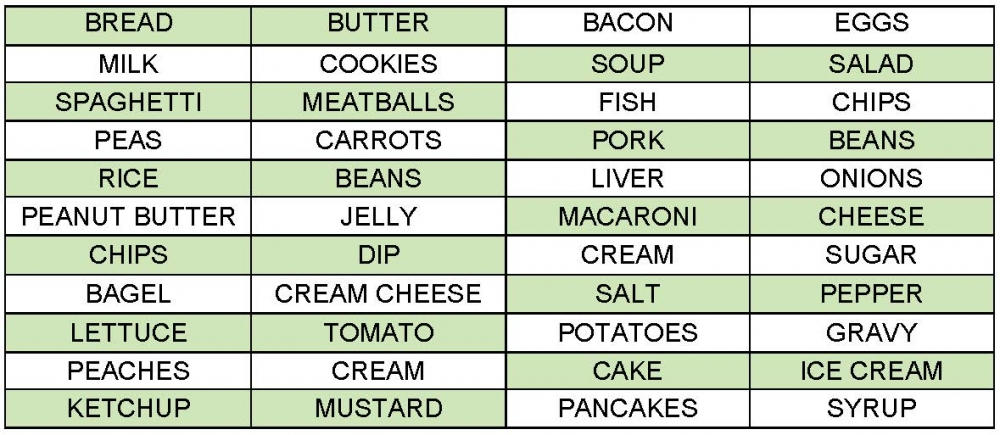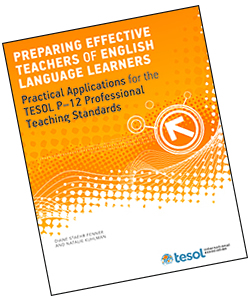Three Activities for Bonding Over Food
by Sarah Sahr
 Around the globe, nations take great pride in the food they serve and eat. Every country I’ve been fortunate enough to visit or live in has an astounding array of menu choices. In learning language, you’d be hard pressed to find a beginner proficiency book that doesn’t have a chapter dedicated to food. A body’s gotta eat!
Around the globe, nations take great pride in the food they serve and eat. Every country I’ve been fortunate enough to visit or live in has an astounding array of menu choices. In learning language, you’d be hard pressed to find a beginner proficiency book that doesn’t have a chapter dedicated to food. A body’s gotta eat!
Here are a few activities and one teaching tip. Please share your favorite food activities in the comment box below! Bon appétit.
Creating Food Work Stations
For a Younger Audience
This activity could take an entire morning! Create six work stations in your classroom. Set-up will take a great deal of time, so make sure you arrive at school early. You can download labels to post at the location of each work station and some materials you might need to make the stations operational. Please feel free to modify these to the proficiency level of your students. Also download the worksheet each group would need to use as they participate in each stations’ activity.
Before students get started, go over what needs to happen at each station. Use the worksheet to help with your explanations. Answer any questions students might have in advance because you will not be able to follow them station to station. Last, divide the class into groups. The number of groups should be the same as the number of stations. In this example, there are six stations, so there would be six groups.
You may also want to have a timer. Allow students to stay at each station 5–10 minutes, depending on their levels of English proficiencies. It may be that some of the stations are easier than others. Add extra content as needed.
Stations
1. What’s in that bag?
Materials: 5 small cardboard boxes, with lids, that can hold a piece of food; tape; small pieces of colored felt; scissors
Preparation: Place one food item in each box. I suggest an apple, banana, carrot with a long stem, potato, and a small head of cabbage. Tape the box shut and cut a small hole in the top, large enough for a hand to fit through. If you have time, staple a piece of felt over the hole and cut an “X” in the material. (That way, there is no way to see inside the boxes.) Number each box 1–5.
Activity: At this station, students will place their hands through the top of the box and feel the piece of food that is inside. Each person in the group should get a chance to feel the piece of food before the group decides what it is.
2. Unscramble
Materials: Cardstock, scissors, letters
Preparation: Take a strong piece of cardstock and cut it into 16 pieces. Write the following letters on each piece: a – a – c – d – d – g – h – i – n – o – o – p – t – y – z – z (the letters spell candy, hotdog, and pizza)Place the letters on a table in a mixed up fashion.
Activity: At this station, students need to unscramble the letters into 3 words. Once they have found the correct mix, they should write the answers on the worksheet. If you would like to give the students clues, put the first letter of each word on the worksheet,
(i.e. _ _ _ _ _, _ _ _ _ _ _, _ _ _ _ _ or c _ _ _ _, h _ _ _ _ _, p _ _ _ _).
3. Matching
Materials: Cardstock, scissors, words, pictures
Preparation: On cardstock, create words and pictures similar to those in the attached document. If you have an overly bright class, make more picture/word pairs. Mix words and pictures together on a table.
Activity: At this station, students will match the words with the correct pictures. There is no need to write down anything on the worksheet. However, if students need more work at this station, have them create sentences on the back of the worksheet using the foods represented at this station.
4. Categorizing
Materials: Cardstock, scissors, words
Preparation: Copy the words on the attached document to a strong piece of cardstock. Cut the words out and arrange them on the table in any order. Here there are three words per category, but you can make an endless word list if need be.
Activity: At this station, students are able to move the words around until they are in the correct categories. Only then should they write the words on the worksheet under their categories.
5. Sight Words
Materials: flashcards with words and/or pictures (This may be something you have available to you or you may have to purchase or make them.)
Preparation: Create a place for you to sit with a group of students. This could be at a table, on the floor, standing… it’s really up to you. Have your flashcards ready for each group as they pass through your station.
Activity: Depending on the students you are working with, ask students to simply identify the pictures. For other students, ask them to spell the word. Additionally, you can just hold up food words and ask students to read them. This is also a great opportunity to ask students how the work stations are going. Have there been any challenges? Have things been too easy?
As the teacher, you may also use this time to check in with students. Assess how the groups are working together: Are they working together or is one student taking over?
6. Silent Reading Station
Materials: books
Preparation: Arrange a variety of books for students to look through, talk about, and/or read.
Activity: This station is a place for students to relax, pick up a book and read about food. If your classroom library has a great selection of books, include all those that have a food theme. If you have a teaching assistant, this would be a great place for him or her to be. He or she could read a book aloud and facilitate a small group discussion.
For an Older Audience
A Way to Make Pairs
Below is a list of food pairs. These are common foods that we usually see together in the United States. If you're teaching elsewhere, consider creating your own food pairs with different matches, like bangers and mash, or phở and hot sauce. Put each word on a 3” x 5” card and hand cards out at the start of class. Have students find their partner by finding the food pair.

download PDF
Create a Menu
Have students think of a cultural event that occasions a particular type of food. For example, all important holidays in Ethiopia come with a healthy serving of doro wat. Doro wat is a spicy chicken curry/stew that is a deep crimson color. It’s served with injera, a spongy flat bread made of tiff. (The best part of doro wat is the hardboiled egg that comes with it… absolutely delicious!) It has been my experience that when you ask an Ethiopian what his or her favorite dish is, nine times out of ten, he or she will say, “doro wat.”
This activity has two variations:
- Students create a list of food items that are served at a particular cultural event, such as Chinese New Year or a university football game tailgate.
- Students write the recipe to make their favorite dish. Make sure the recipe has a list of ingredients and the preparation procedure.
Both activities should come with a paragraph explanation of why the food mentioned is such a pivotal part of the event. Pictures would be a wonderful addition. If you are feeling adventurous, ask students to bring some of their favorite foods into class to share.
____________________
Sarah Sahr works at TESOL and is currently pursuing her doctorate in education administration and policy at George Washington University. Her professional career has taken her all over the world, most notably as a Peace Corps Volunteer in Ethiopia and as a traveling school teacher/administrator with Ringling Bros. and Barnum & Bailey circus. Sarah is also a certified ashtanga yoga instructor and has managed an eco-lodge in Chugchilan, Ecuador.
TESOL Bookstore
Preparing Effective Teachers of English Language Learners:
Practical Applications for the TESOL P-12 Professional Teaching Standards
Special Offer—save 20% on orders through 1 March 2013
ENTER code: Title3
 Preparing Effective Teachers provides comprehensive guidelines for creating, revising, and accrediting ESL programs and for professional development of all teachers who work with English language learners
Preparing Effective Teachers provides comprehensive guidelines for creating, revising, and accrediting ESL programs and for professional development of all teachers who work with English language learners
Authors Diane Staehr Fenner and Natalie Kuhlman bring their extensive knowledge of the Standards and offer step-by-step applications using the five domains of Language, Culture, Instruction, Assessment, and Professionalism. Readers find new directions, ideas, and ways of thinking about how programs prepare teachers who teach English language learners in the United States as well as around the world.
NEW Pricing: List $69; Member $55
Order from the TESOL Bookstore
Toll Free: 888-981-0041
E-mail: tesol@brightkey.net
Order #738
ISBN 9781931185738
"As we raise the bar for our P–12 students, we must also do so for the programs that prepare our teachers. I congratulate TESOL on this timely and practical volume."
James Cibulka, President
National Council for Accreditation of Teacher Education
and Council for the Accreditation of Educator Preparation
". . . Most important, this book provides a framework for professional development programs that is built on the TESOL P–12 Professional Teaching Standards that will benefit ESL as well as content-area teachers."
Margarita Calderon, PhD
Professor Emerita/Senior Research Scientist
School of Education, Johns Hopkins University